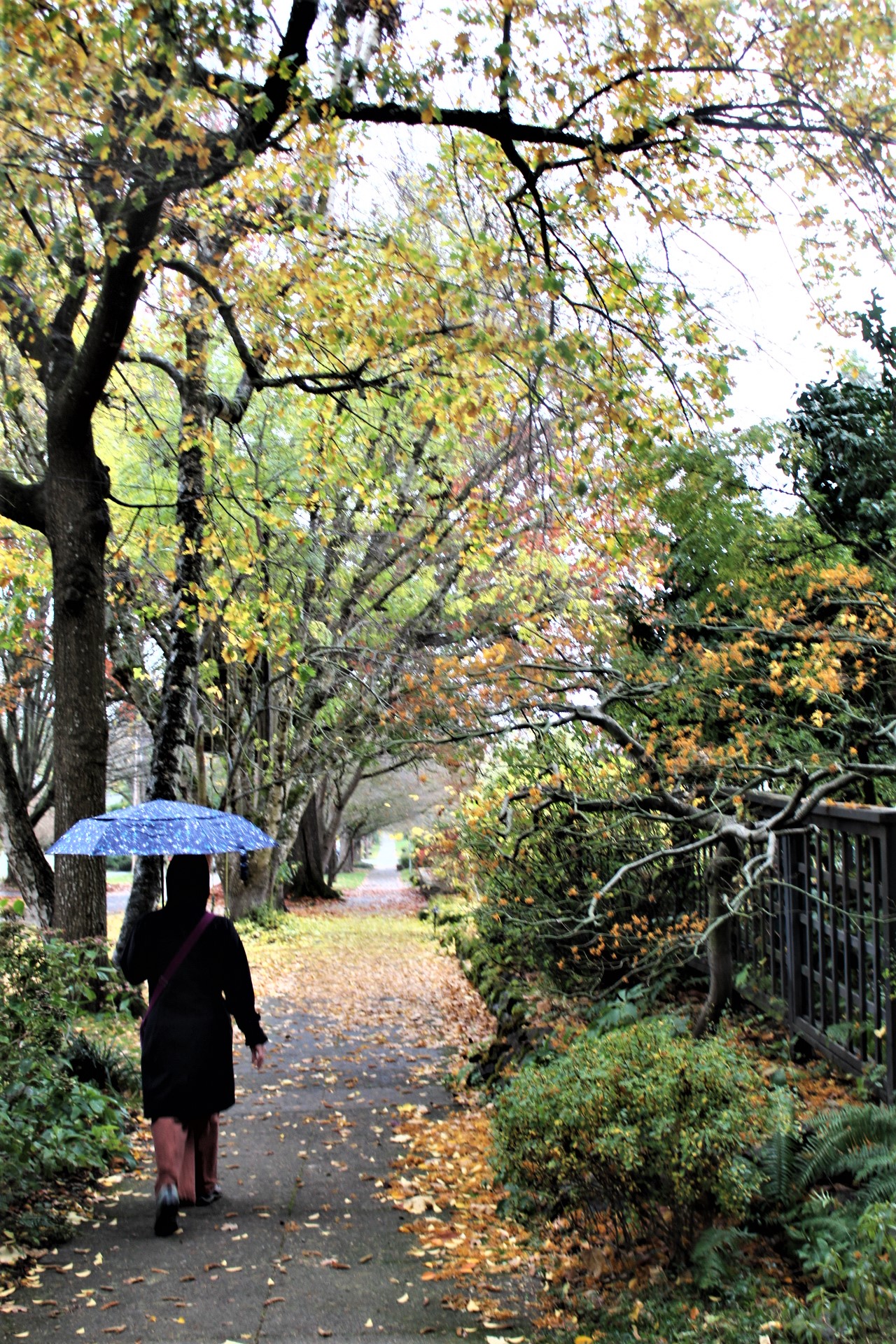
A major observation that one makes about high desert– besides hopscotch carpets of sagebrush and such pungent scents– is the sharp dryness of things. All seems to crackle underfoot; air is stripped of moisture for the most part. In a short time, my skin and hair feel the effects—skin parchment-like, hair becoming flyaway. Brittleness reigns. Yet, there is something attractive about this landscape. It’s aridity and semi- monochromatic austerity lend a spareness best seen in open range, but also is notable where the western juniper, ponderosa pine, larch grow. But as small things are discovered, another world is revealed.
The High Desert Museum is a good place to experience this. Opened in 1982, it exits to encourage people to consider the history of this high desert area–part of the Columbia Plateau– and how people have interacted with it.

We hurried through indoor exhibits– we’d visited before and had limited time. The outdoor exhibits have been improved and I had to be outdoors–it was a lovely day.
Follow in my footsteps as we head outdoors during a slideshow, below. You’ll note there is evidence of a riparian part of high desert–so crucial to this land– with small creeks. (There’s an exhibit with deeper water for two river otters, not an uncommon critter in Oregon.) But everywhere are reminders of high fire danger–it was well posted–and I thought how those trees and shrubs could be immediate fire timber and kindling. Evidence of fire as we crossed the Cascade Range came to mind, as well as wildfires near our home once.
You’ll note, at the end of the slideshow, a replica of a sheepherder’s wagon in the 1880s; it is reminsicent of wagons in which pioneers crossed the continent to settle the West. Or, rather, resettle, since Native Americans lived and worked here for so very long….
The draw for us this visit was the Miller Family Ranch and Sawmill. Though a fictional family, the reconstructed settlement is typical of a ranch for white homesteaders who claimed and worked land in Central Oregon in the1880s. The climate is not very hospitable; life was difficult. We moved between a barn, cabin, corral, bunkhouse, root cellar, and sawmill. There would have been cattle tended and horses on open range; we noted chickens and a chicken house. During summer months there are reenactments of the lives lived in such a homestead then.
For current residents of this part of Oregon, ranching is still a primary part of the culture and economy.




By this time, indigenous land had already been explored and occupied by people such as trappers, missionaries, and surveyors. Native people were forced to sign treaties or removed– or dealt with violently. Native rights retained did allow descendants to still hunt, gather and fish in areas they used to inhabit so freely. Visiting the ranch reconsturction brought up conflicting issues and feelings, with much to consider, as usual, when I revisit American history. (Every country has its painful history but it doesn’t help much to think on that, either–especially these days.)













It was a good day well used and we were ready for a meal and a restful evening. For next week’s blog I’ll take you to Smith Rock, one of the more impressive sights I’ve seen in Central Oregon. The land opens up as you drive from Bend, and mountain vistas are clear on a sunny day. Then jagged and often reddish rocks and pinnacles of the State Park are revealed. A very small teaser is below.















































































































You must be logged in to post a comment.